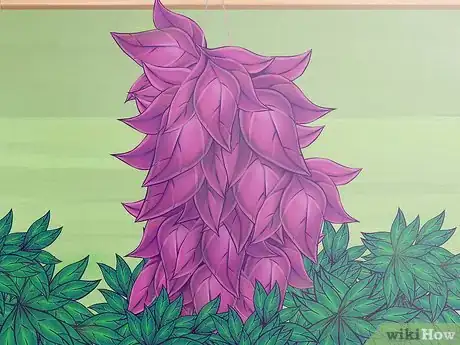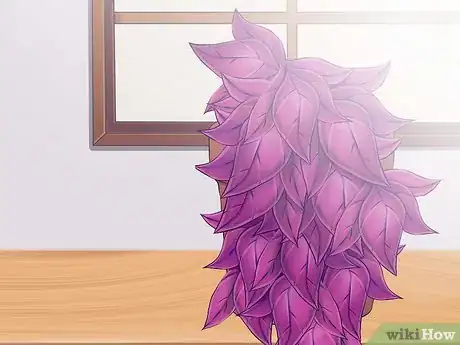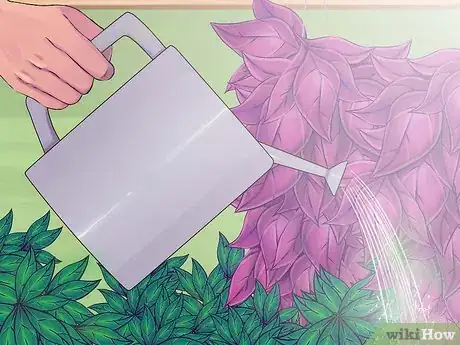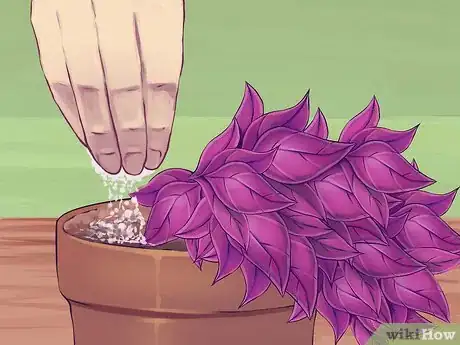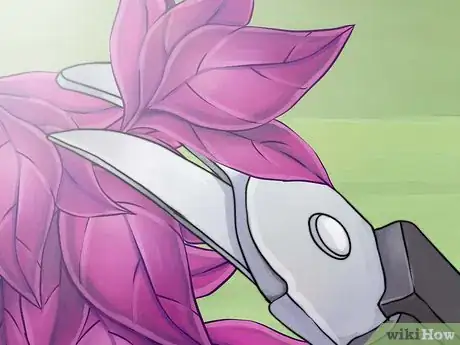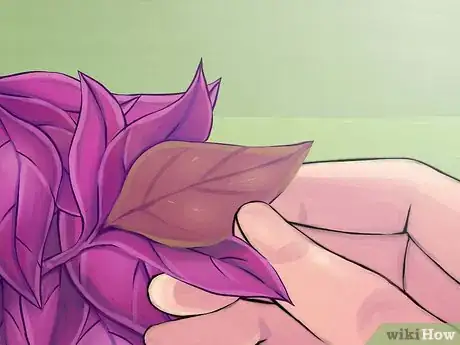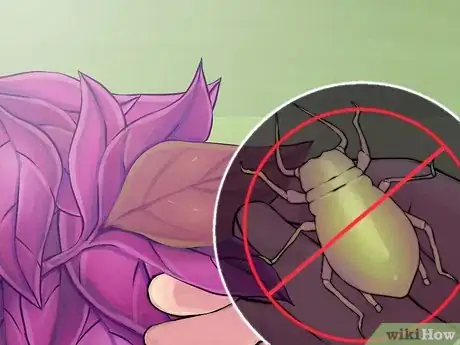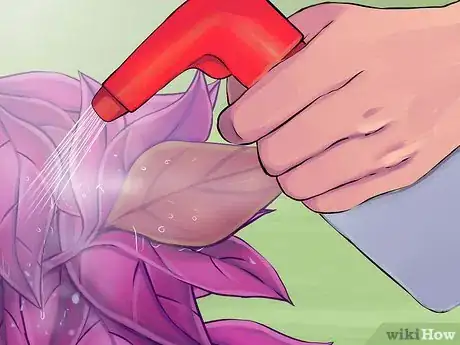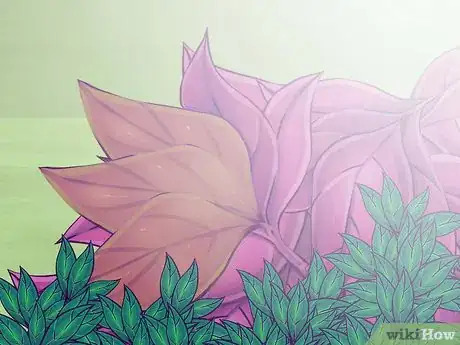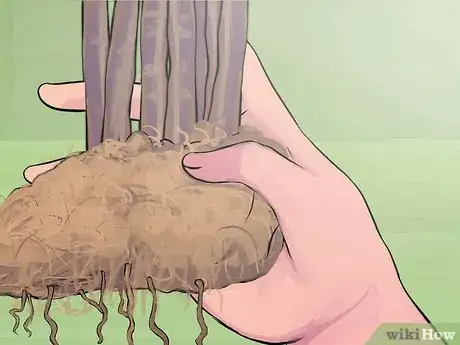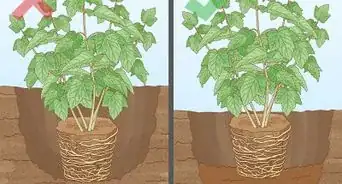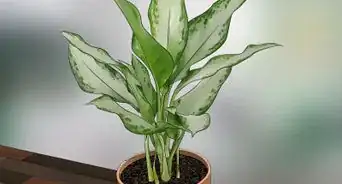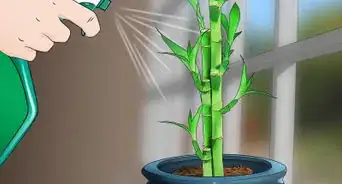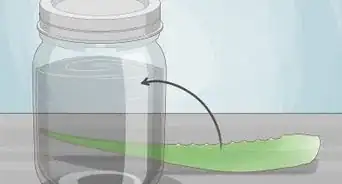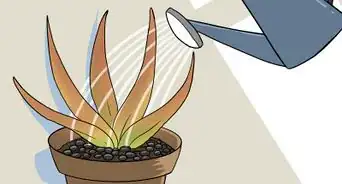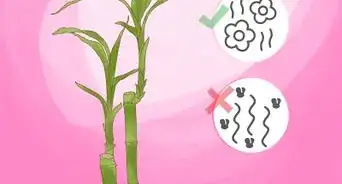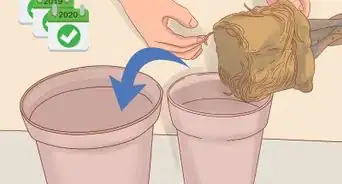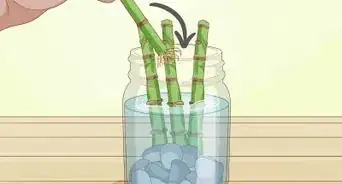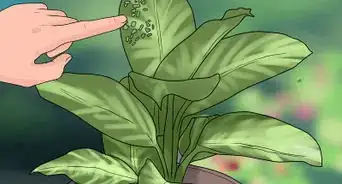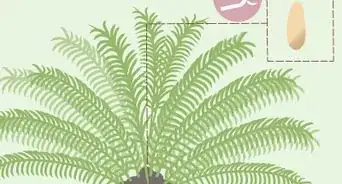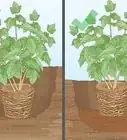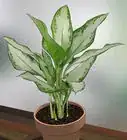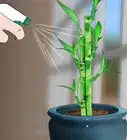This article was co-authored by Katie Gohmann. Katherine Gohmann is a Professional Gardener in Texas. She has been a home gardener and professional gardener since 2008.
There are 8 references cited in this article, which can be found at the bottom of the page.
wikiHow marks an article as reader-approved once it receives enough positive feedback. This article received 19 testimonials and 90% of readers who voted found it helpful, earning it our reader-approved status.
This article has been viewed 584,976 times.
Wandering Jews are beautiful plants known for their solid or variegated leaves. These hardy perennials thrive outdoors as groundcover or in pots which allow their tendrils to cascade. They are relatively easy to care for and incredibly simple to propagate, making them great houseplants.
Steps
Starting Your Wandering Jew Plant
-
1Determine growing conditions. Wandering Jew plants are native to South America and prefer lots of sunlight and warm temperatures, around 55–75 °F (13–24 °C). This shouldn't be a problem if you're going to keep the plant inside; however, you'll need to make sure conditions are suitable if you plan on growing the plant outside. Refer to Part 2 about getting enough sunlight.
- The U.S. Department of Agriculture has made a map of the U.S. divided into zones based on average minimum temperature. Plants are assigned a zone or several zones in which they thrive.[1] For example, the Wandering Jew plant grows best in zones 9-11. According to the U.S.D.A. map, much of the South and a narrow strip of the West Coast make up these zones. Refer to this map to see if your area's temperatures are warm enough to support a Wandering Jew plant, if you're planning on keeping it outside.
- If you do not live in USDA hardiness zones 9-11, keep in mind that you may not be able to keep your plant outside during the winter. You may want to grow it inside instead.
-
2Choose an adequate pot for your plant. You can use a regular gardening pot with a saucer or a hanging basket. Regardless of what you choose, make sure there are holes for water drainage.
- If you use a hanging basket, remember to turn it daily so it gets equal amounts of sunlight.
- Be sure to choose a pot that's not too heavy, especially if you plan on hanging it. You might want to pick a plastic pot instead of a ceramic one for this reason. A lighter pot will also make it easier to move inside in case of frost.
Advertisement -
3Pot your Wandering Jew plant. Fill the pot about two-thirds full of your potting soil, then place the plant in the center of the pot. Add soil to surround and fill in the sides. Gently press down on the soil around your plant and water it till the soil is completely moistened.
- You can purchase a Wandering Jew plant at many gardening or home improvement centers. Cuttings are also a good way to start your own plant. You'll need to get a hold of a few cuttings from an already established Wandering Jew plant. You'll need to learn how to Grow Cuttings from Established Plants.
Caring for Your Plant
-
1Give your plant enough sunlight. If you can, give them a combination of direct and filtered sunlight.
- An eastern facing windowsill is a good spot for Wandering Jew plants. They'll receive bright indirect light throughout the day, but watch to make sure the space doesn't become too hot in the afternoon. If so, move the pot a few feet away or use a curtain to filter the light.[2]
- If the plant primarily remains outside, find a spot that receives indirect sunlight. This could be on a porch that gets morning sun for several hours. Just make sure that it's not sitting in direct sunlight without any shade for most of the day.
-
2Water your plant often. Wandering Jews like the soil to be moist, but they don't want to drown! Every day, stick your finger inside the soil. If it feels dry, add enough water to completely moisten the soil. Excess water should run out of the bottom of your pot.
- If you've set your pot on a saucer, be sure to empty the saucer when it fills.
- Make sure not to water straight into the crown of the plant or it may rot.[3] You can water the plant less during the winter months, when its growth slows.[4] Simply let it remain a little dry for a bit longer before watering.
- Some people find it convenient to put self-watering Aqua Globes in their plant pots; however, these glass globes require cleaning and regular filling. You'll still need to monitor your plant's moisture if you choose to use them.
-
3Fertilize regularly. Every two weeks, give your plant some liquid 10-10-10 fertilizer that has been diluted with an equal part of water.
- Liquid 10-10-10 fertilizer is considered to be an all-purpose fertilizer made up of ten percent nitrogen, ten percent phosphorous, and ten percent potassium.[5] Read the container's instructions carefully, as some liquid fertilizers may actually be powders requiring you to mix in water.
- Fertilizing is only necessary during the heaviest growing season, from spring to early fall.
-
4Prune your plant. To keep your plant from becoming leggy, pinch back or cut the stems above the leaf node. Don't be afraid of cutting too much! You can prune back about a quarter of the plant. This will encourage the plant to fill in rather than continue to grow out through tendrils.
- The best time to prune is during the spring and summer months, when the plant is putting on the most growth. After you've pruned, give the plant a chance to put on new shoots and fill in.
- If you find your plant is too dense and bushy, you'll need to prune around the base so that the plant can get adequate circulation and sunlight.
-
5Remove diseased, rotted, and dead leaves. Eventually the plant will stop growing leaves at the base, but will keep growing tendrils, at which point you might want to revive and repot the plant.[6] To do so, you can plant cuttings, root some of the shoots in water, or simply set cuttings on top of the soil.[7]
Common Problems and Solutions
-
1Treat aphids. New growth on Wandering Jew plants often attracts tiny green insects called aphids. They're usually found near stems. One effective treatment is pinching off or pruning the affected stems and heavily misting the remaining plant with water.[8] You can also use a hose or high-powered stream of water to blast them off of the leaves.
-
2Refresh brown leaves. Mist your plant often. When the humidity is low, your plant's leaves will turn brown, but periodic water misting will help the leaves stay vibrant. Keeping the leaves wet will also help with any aphid problems your plant may develop. Fill a spray bottle with water and just mist until the leaves are lightly moistened.
- Brown leaves can also be a sign that your plant is getting too much sunlight. In this case, make sure your plant is not directly in the sun by moving the pot or placing a filter, such as a curtain, in between the plant and the window.
- Try to use distilled or bottled water when misting the leaves for the best results.
-
3Restore faded leaves. Leaves that lack their notable vibrancy and color are probably not getting enough sunlight.[9] Gradually increase the amount of sun your plant receives so that you don't shock the plant. This might involve moving the pot closer to a window that receives more light or finding a sunnier spot in the yard for your plant.
-
4Remove root rot. If the plant is fading in color, but the leaves are turning a faded yellow, the plant may be getting too much water and the roots are rotting.[10] If this is happening, the plant is probably not putting on much new growth, if any. You'll need to cut out the portion of the plant that is rotting, make a cutting from a healthy part of the plant, and replant it.
Expert Q&A
-
QuestionThe leaves on my Wandering Jew are turning black. What am I doing wrong?
 Katie GohmannKatherine Gohmann is a Professional Gardener in Texas. She has been a home gardener and professional gardener since 2008.
Katie GohmannKatherine Gohmann is a Professional Gardener in Texas. She has been a home gardener and professional gardener since 2008.
Professional Gardener It might be root rot. You want to keep the soil damp, but not too damp- it's a delicate balance. Try to take a cutting from a healthy part and discard the rest. Next time, make sure to check the soil with your finger before you water. If the soil is dry 2 inches down, give it some water. If it's damp up by the top, leave it alone and check the next day.
It might be root rot. You want to keep the soil damp, but not too damp- it's a delicate balance. Try to take a cutting from a healthy part and discard the rest. Next time, make sure to check the soil with your finger before you water. If the soil is dry 2 inches down, give it some water. If it's damp up by the top, leave it alone and check the next day. -
QuestionIs it safe to eat the wandering jew plant?
 Katie GohmannKatherine Gohmann is a Professional Gardener in Texas. She has been a home gardener and professional gardener since 2008.
Katie GohmannKatherine Gohmann is a Professional Gardener in Texas. She has been a home gardener and professional gardener since 2008.
Professional Gardener Although the Wandering Jew Plant is not toxic and therefore safe to eat, I would not recommend eating it.
Although the Wandering Jew Plant is not toxic and therefore safe to eat, I would not recommend eating it. -
QuestionHow can I get my wandering Jew plant to flower?
 Katie GohmannKatherine Gohmann is a Professional Gardener in Texas. She has been a home gardener and professional gardener since 2008.
Katie GohmannKatherine Gohmann is a Professional Gardener in Texas. She has been a home gardener and professional gardener since 2008.
Professional Gardener The Wandering Jew Plant is typically grown for its foliage rather than its flowers.
The Wandering Jew Plant is typically grown for its foliage rather than its flowers.
Warnings
- Be careful. Wandering Jew sap can cause skin irritation in humans and allergic reactions in dogs.[11]⧼thumbs_response⧽
Things You'll Need
- Cuttings or a plant
- Peat moss based potting soil
- Pot or hanging basket
- Water
- Fertilizer
- Aqua Globes (optional)
- Pruning shears (optional)
References
- ↑ http://planthardiness.ars.usda.gov/PHZMWeb/
- ↑ http://homeguides.sfgate.com/indirect-light-plants-49313.html
- ↑ http://www.gardeningknowhow.com/houseplants/wandering-jew/growing-wandering-jew-plants.htm
- ↑ http://www.almanac.com/plant/wandering-jew
- ↑ http://homeguides.sfgate.com/use-101010-fertilizer-garden-36229.html
- ↑ http://www.gardeningknowhow.com/houseplants/wandering-jew/growing-wandering-jew-plants.htm
- ↑ http://www.gardeningknowhow.com/houseplants/wandering-jew/growing-wandering-jew-plants.htm
- ↑ http://www.almanac.com/plant/wandering-jew
- ↑ http://www.houseplantsforyou.com/wandering-jew/
About This Article
To take care of your Wandering Jew plant, place it by an east-facing window so that it gets a combination of direct and indirect sunlight. Keep the soil moist, but not soaked, and water the soil instead of the top of the plant to avoid rot. You should also fertilize the Wandering Jew plant every two weeks with a liquid 10-10-10 fertilizer. To keep the plant from getting leggy, trim back the stems in the spring and summer.
